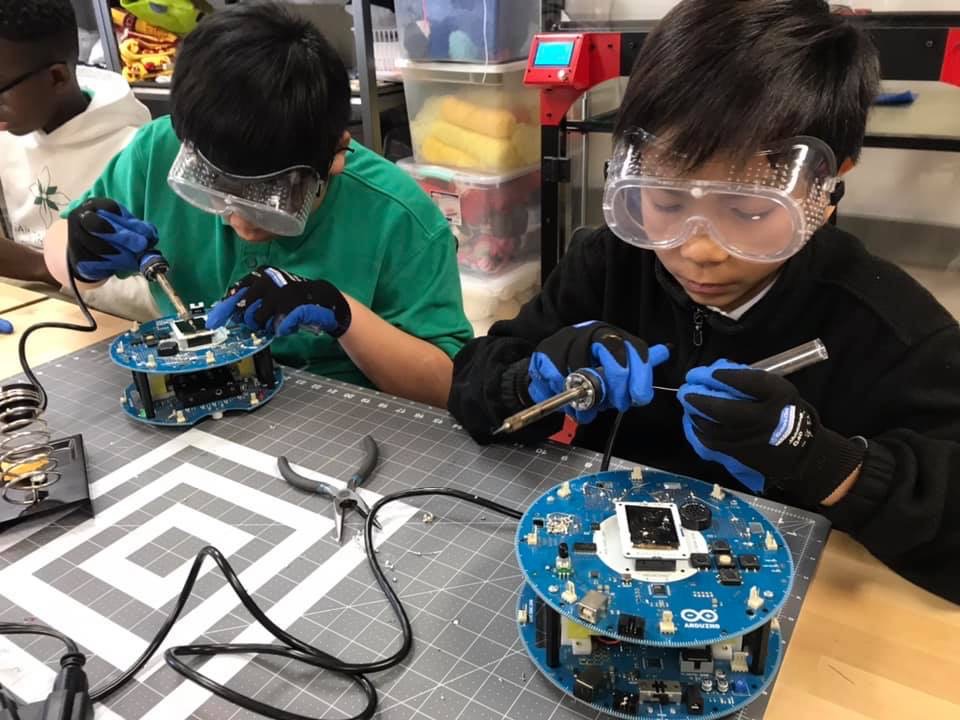Discover the Difference: What to Look for in a STEM School
by Diocese of Des Moines | May 3, 2020

STEM programs in elementary schools continue to grow in popularity and availability. But what is STEM education and how can it benefit your child? While there is no universal definition of STEM education, Nathan & Nilsen (2009) define STEM education as, "an interdisciplinary approach to learning where rigorous academic concepts are coupled with real-world lessons as students apply science, technology, engineering, and mathematics in contexts that make connections between school, community, work, and the global enterprise enabling the development of STEM literacy and with it the ability to compete in the new economy."
STEM Education Offers:
· Collaborative learning - Collaboration is a cornerstone of STEM education. By working together to conduct experiments, gather data, write reports, and solve problems, students discover the value of teamwork and how to leverage the unique talents and skills of each individual team member to reach a goal. At the Diocese of Des Moines, collaborative learning is achieved through student-led, project-based learning. For example, fifth grade students at St. Theresa Catholic School explore career paths, personal finance, and how to work as a team through a simulation activity of a fictional town they operate.
· Hands-on discovery - True STEM education doesn't happen through "sit and get" instruction, but rather through experimentation and project-based learning. This hands-on approach gives children the opportunity to apply what they've learned in a meaningful way. Students at St. Theresa were the first in the state of Iowa to take part inthe SeaPerch STEM program. SeaPerch equips students to discover the world of robotics engineering by building a remotely operated vehicle that travels underwater.
· Individualized instruction and pacing - STEM education, while rigorous, is for children of all academic abilities and backgrounds. The shift from teacher-centered instruction to inquiry-based learning empowers all students to apply critical thinking at their own pace. At St. Francis of Assisi Catholic School, students of all abilities are able to participate in inquiry-based learning at their own pace. The school offers diverse learner support through its reading recovery program, gifted learner program and individualized student interventions.
· Integrated curriculum - With STEM education, core subjects are not siloed. Through a cross-curricular approach to instruction, students don't just experience math in "math class" but in other core subject areas. All Diocese of Des Moines Catholic schools use curriculum maps to ensure cross-curricular teaching across all academic disciplines. Moreover, not only are core subjects integrated, but professional development for faculty and staff is designed to break down siloes between schools. Under the diocesan regionalization plan, all 16 schools come together as one integrated educational system where teachers share best practices for the benefit of all students.
Finally, STEM education helps students express their creativity while building resiliency. Children are encouraged to explore new ideas and allowed to take risks in a safe environment that fosters creativity and ingenuity. Trial and error is part of the STEM education process that ultimately produces students who are adept at problem-solving. Excellence is relentlessly pursued at Diocese of Des Moines Catholic schools by instilling a culture of continuous improvement, innovation, and growth. We employ use of the scientific method and PDSA (Plan, Do, Study, Act) engineering model of trial and error. As a result, our schools challenge all students to aim higher academically, spiritually and personally.
When considering STEM education, parents should inquire about the school's STEM philosophy and how the school provides inquiry-based learning and applies this learning to real-world situations. Parents should also explore how students use technology at the school and how it’s integrated into the curriculum across all subject matter. Simply having technology available does not mean the school offers STEM education.
At all Diocese of Des Moines Catholic schools, research-based teaching strategies and innovative applications of technology are available across all grade levels. Desktop computers, laptops, iPads, tablets, interactive whiteboards, and other technology is integrated into the classroom environment or available in the school's STEM lab. Many of our schools offer Makerspace, computer-aided design software, 3D printers, and more to support project-based learning and hands-on STEM activities. Additionally, partnerships with local, state and national STEM programs further enhance the STEM experience for our students.
Want your child to experience the benefits of an integrated STEM education? Visit dmdiocese.org/catholic-schools to find a Catholic school near you and discover the Catholic school difference!
Source: Nathan, B. R., & Nilsen, L. (2009). Southwestern Pennsylvania STEM Network long range plan. Pennsylvania: Southwest Pennsylvania Regional STEM Network.